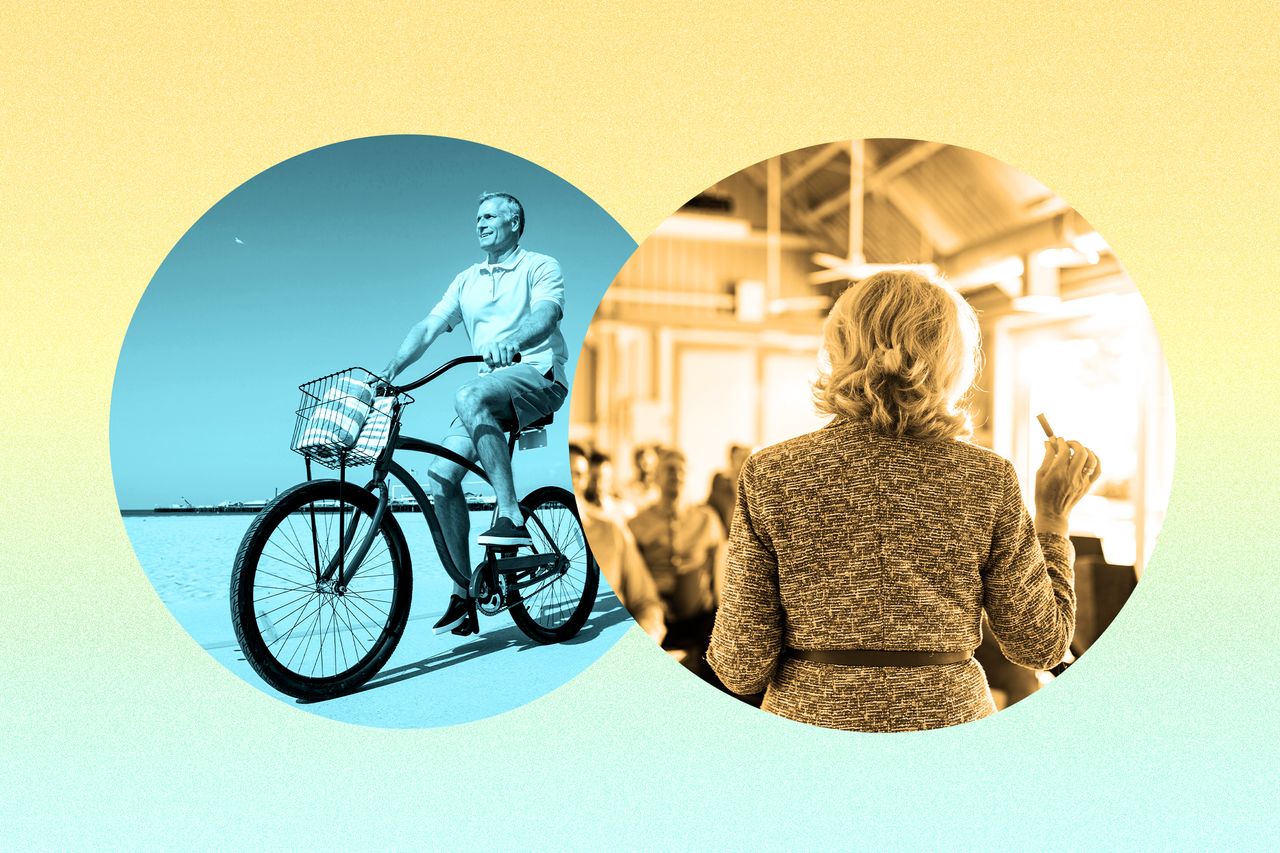How Much Caffeine You Should Actually Have—and When
Figure out the right amount of caffeine to boost alertness without disrupting your sleep
Caffeine can give us a boost, but too much can mess with our sleep and make us feel jittery. So how do we know what’s the right amount?
Generally, government and health groups recommend that healthy adults consume no more than 400 milligrams of caffeine a day. That comes out to about four, 8-ounce cups of coffee, says Jennifer Temple, a professor of exercise and nutrition sciences at University at Buffalo School of Public Health and Health Professions.
(No, that 20-ounce Starbucks Venti doesn’t count as one cup of coffee.)
And believe it or not, we are doing pretty well on this target. The average American adult consumes about 200 milligrams of caffeine a day and in Europe, it is 270 milligrams, according to a 2017 review study.
But not everyone is optimising their caffeine intake to maximise how it can help them—by sharpening concentration for work or giving them a boost before a run—without hurting their sleep or overall health.
Here’s how to think strategically about getting the most out of your daily dose.
Optimising the boost
Caffeine can help you focus and keep you alert.
About 100 to 150 milligrams—or one to 1.5 cups of coffee—is a ballpark amount that will deliver a boost, says Astrid Nehlig, an emeritus research director at the French National Institute of Health and Medical Research, who has studied caffeine’s impact on brain activity, though it varies from person to person.
The effects generally kick in about five minutes after consumption and increase to become optimal for between roughly 15 and 120 minutes, Nehlig says.
Caffeine has been linked to physical benefits, too. People walked more on days they drank coffee than on days they didn’t, according to a 2023 study of 100 people in the New England Journal of Medicine. Participants took an average of 1,000 more steps on days when they drank caffeinated coffee than when they didn’t.
Other studies have suggested that caffeine can sometimes help us work out harder, such as when we have it before high-endurance exercise like long runs or swims, or sports that require a sustained effort, like soccer, Nehlig says.
The same boost hasn’t been found with shorter efforts, such as a sprint. Caffeine doesn’t act directly on muscles but rather reduces your rate of perceived exertion and the time it takes you to feel exhausted.
The downsides
Caffeine’s main negative for your health is that it can disrupt your sleep.
The NEJM study that found that people walk more on days when they drink caffeine also found a downside. On days when study participants could drink as much caffeinated coffee as they wanted, they slept on average 30 minutes less than on days they didn’t drink any.
The impact on sleep varies greatly depending on how fast you metabolise caffeine, says Gregory Marcus, a cardiologist and professor of medicine at University of California, San Francisco and first author of the NEJM study.
On average, it takes about 4.5 hours for half of the caffeine consumed to pass through your system. However, genetic differences make some people metabolise it slowly or quickly, doctors and researchers say. The population is roughly split between fast and slow metabolisers.
The sleeping and walking study tested whether participants were slow or fast metabolisers of coffee. Those that were slow metabolisers slept nearly an hour less on the nights they drank caffeinated coffee, while the fast metabolisers didn’t experience any impact on sleep.
Where to get your caffeine
The best source of caffeine is unsweetened coffee or tea, says Dr. Frank Hu, professor of nutrition and epidemiology at Harvard T.H. Chan School of Public Health. These drinks have other beneficial ingredients, such as polyphenols, which have antioxidant effects which reduce inflammation.
The caffeine content in coffee and tea can vary, but soda can’t have more than 71 milligrams per 12 ounces, per Food and Drug Administration regulations.
Adults get most of their caffeine from coffee, but the market for energy drinks is growing. Pay extra attention to the caffeine in these drinks, because some contain very high levels.
Getting caffeine from soda or energy or sports drinks makes it more likely you are also getting a high dose of sugar and empty calories, says Hu.
Extra caution
Kids under 12 should avoid caffeine, while 12- to 18-year-olds should have no more than 100 milligrams a day, according to the American Academy of Pediatrics. Pregnant women are advised to have no more than 200 milligrams of caffeine a day.
People with chronic conditions like high blood pressure, diabetes or heart disease might want to be more cautious about their caffeine consumption, Hu adds. The NEJM study found that on the days when participants consumed caffeine, they had more abnormal heart rhythms in the lower chamber of the heart, which is associated with a greater risk of developing heart failure.
And people who get migraine headaches should try to drink no more than 100 milligrams of caffeine a day, the equivalent of a mug of coffee, says Dr. Amaal Starling, a headache specialist and neurologist at Mayo Clinic in Scottsdale, Ariz. She advises her patients who have daily or severe headaches not to drink any caffeinated beverages or switch to decaffeinated coffee.
 Copyright 2020, Dow Jones & Company, Inc. All Rights Reserved Worldwide. LEARN MORE
Copyright 2020, Dow Jones & Company, Inc. All Rights Reserved Worldwide. LEARN MORE
This stylish family home combines a classic palette and finishes with a flexible floorplan
Just 55 minutes from Sydney, make this your creative getaway located in the majestic Hawkesbury region.
Relationships get complicated when one spouse retires and the other keeps working
When one spouse retires but the other doesn’t, roles change and feelings get complicated.
David Buck, 60, stepped back from a long career in sales management just as his wife, Susan Rose, 58, an ordained minister, leaned in, working 40-plus hours a week.
They’ve had to rethink who does what at home. David now folds more of the laundry and takes on grocery duties. He also has freedom, which Susan sometimes longs for. He talks about going to visit their adult children, who live out of state. Their first grandchild is on the way.
“I do get jealous. I have a couple more years,” Susan says.
Most couples now retire at di’fferent times , research suggests.
Only 18% of retired households claimed Social Security at the same time, according to a review of Federal Reserve data conducted by the Center for Retirement Research at Boston College.
A separate poll found that just 11% of couples retire at the same time. Nearly two-thirds stagger their retirement by at least a year, according to a survey of 1,510 couples ages 45 to 70 commissioned by Ameriprise Financial, a financial services company.
Timing two retirements
The timing of retirement is often out of a couple’s hands. Nearly one-third of retirees surveyed left the workforce unexpectedly due to layoffs and early retirement packages. Health is also a factor.
Women, who often leave work to care for older parents or in-laws, retire at younger ages, averaging 62 compared with 65 for men, according to the Center for Retirement Research. A younger spouse may continue working to keep family health insurance until Medicare kicks in, or to delay having to tap retirement savings. They may want to hold off collecting Social Security to get higher payments.
Some people simply want to keep working even if their partner doesn’t. Living on one paycheck can be scary for people used to having two, no matter how much money couples have.
When couples retire at different times, routines, schedules and expectations diverge, and tensions can surface. Assumptions arise over who should clean or make dinner. The still-working partner may feel a twinge of envy when the other one heads to the beach or visits grandchildren.
“There can be resentment. This is the time people have been dreaming about,” says Pepper Schwartz, emeritus professor of sociology at the University of Washington who focuses on relationships.
Other couples are wary of their partner retiring and being around all the time. “They dread too much togetherness,” says working filmmaker Sharon Hyman, 61, who lives separately from her retired partner of 25 years.
Navigating new routines
David Brown, 70, and Beth Keenan-Brown, 64, planned to retire together. Last year, Beth left her nursing job and David retired from the Secret Service. They made plans to travel to Budapest and spend more time at their beach house.
Shortly after Beth retired, she received a dream job offer and returned to work full time, as director of clinical operations for a Maryland hospice agency. Now she spends the week in their Severna Park, Md., home, which is larger and has space for a home office, while David stays at their beach home in Delaware, where he bikes and volunteers with Meals on Wheels. They travel back and forth.
“It’s a challenge keeping our calendars straight,” says David.
Beth logs her meetings on a joint Google Calendar so David knows when not to call. Every morning, they FaceTime over coffee and talk about their plans. On Wednesdays they each get takeout from the same type of restaurant, recently Ethiopian, and eat together over a video call.
There are upsides, too. They have made two trips since she took her new job, one to Costa Rica and the other to the Netherlands, thanks to her added income. Beth has unlimited paid vacation with her new job.
She says it would be hard if they were still in the same house and she was working while he was retired. “I think I would drive you nuts,” says Beth, adding that she is younger and has more energy than David.
“I just can’t keep up with you,” says David, who had a stroke a few years ago and needed to slow down.
Tough choices, new roles
Jeni Mastin, 74, of Vancouver, British Columbia, retired a decade ago from a career in nonprofits and social work. Her partner, Cameron Hood, is still working as a musician, teaching music and performing jazz.
“I’m an artist. I imagine I will be working until I drop dead,” he says.
Their different schedules and responsibilities have led to some inconveniences. Earlier this year, Jeni planned a monthlong 65th birthday celebration for Cameron in Mexico. They cut it a week short because of his teaching job. Cameron’s work schedule also means that he can’t always go with Jeni to her doctor’s appointments. His substitute teaching job ends at 3:30 p.m. and there’s an hourlong commute.
David Buck and his wife, Susan Rose, the minister, are navigating the transition in Ponte Vedra Beach, Fla.
David, who describes himself as “semiretired,” continues to advise some clients of his time-management consulting business. Susan logs more than 40 hours a week doing two part-time jobs, one as transitional pastor at a local church and the other at a nonprofit she formed to mentor women in ministry.
David has picked up more responsibilities at home, taking on tasks that Susan did before she began working more and he semiretired. He takes their cars in for maintenance and balances the checkbook.
“If the dogs need to go to the vet, that’s me,” says David.
Susan says she has a hard time letting some things go. “I will say, ‘I can go to the grocery store on the way home,’ and Dave will say, ‘Stop. I can go to the grocery store. Tell me what we need,’ ” she says, although he tends to pick up snacks and cookies that she wouldn’t buy.
It has been an adjustment for David, too.
Being semiretired, he says he sometimes forgets about the demands of a job, especially one in ministry where congregation members have needs outside of 9 to 5. She might call and say her meeting went longer than expected. “Then I’m sitting there thinking, ‘I got dinner about ready. What am I going to do now?’ ” he says.
Consumers are going to gravitate toward applications powered by the buzzy new technology, analyst Michael Wolf predicts
Just 55 minutes from Sydney, make this your creative getaway located in the majestic Hawkesbury region.























